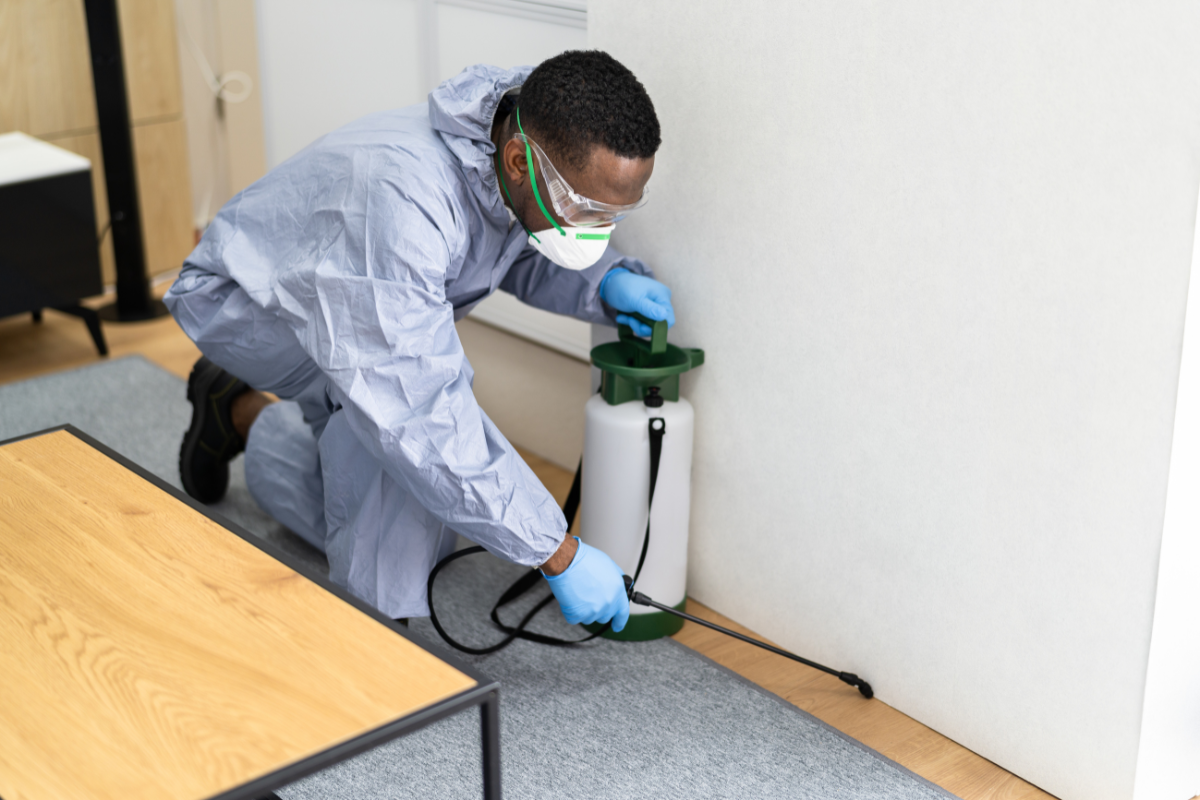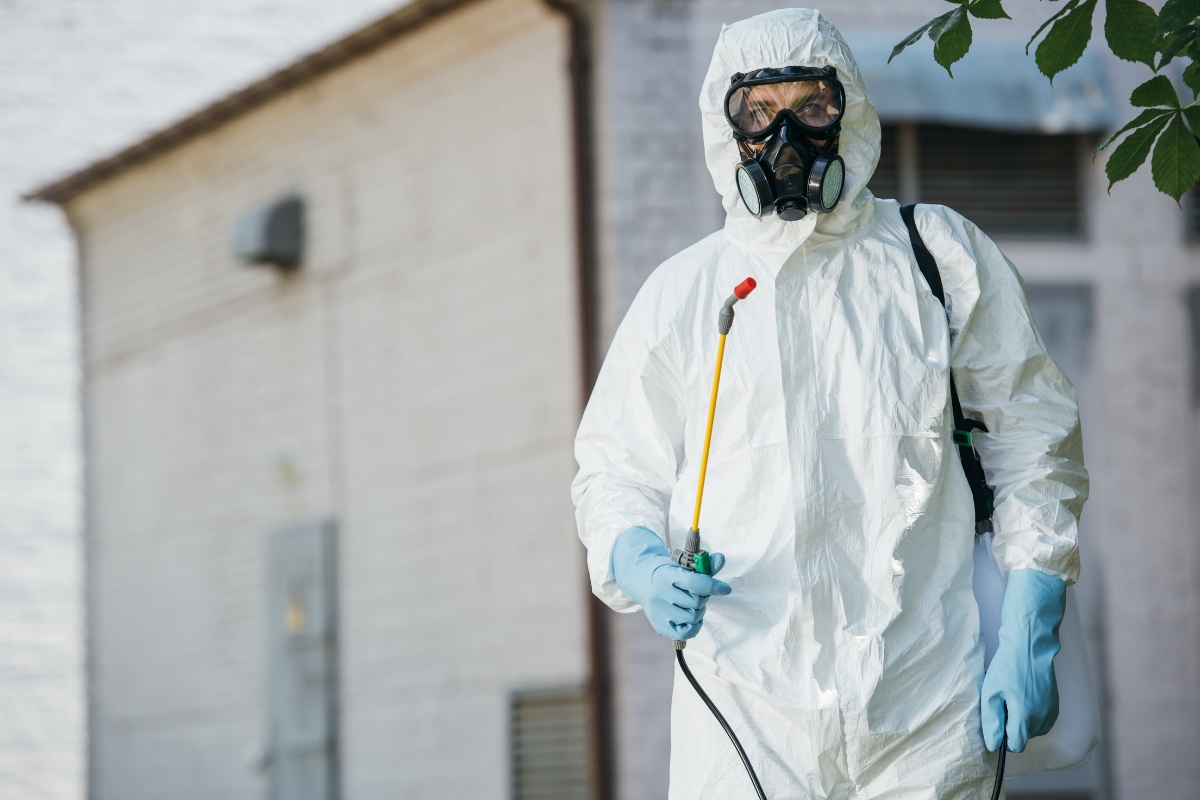


Homes and businesses are built for people, yet wildlife sees them as shelter, food, and warmth. When animals cross that line, the stakes climb quickly. Insulation becomes nesting material. Electrical lines become chew toys. Air quality drops as droppings and dander accumulate in confined spaces. A raccoon can pull apart a soffit in an afternoon. A colony of bats can quietly load an attic with guano for years. The job of a pest control contractor is to end that collision cleanly, legally, and permanently.
This is a world apart from spraying for ants. Wildlife control sits at the intersection of biology, construction, sanitation, and law. The approach has to respect animal behavior and local regulations, or the problem boomerangs. The best pest control service treats wildlife work as its own discipline, with dedicated training, equipment, and a repair mindset.
The first visit: what a seasoned tech is really looking for
When a pest control company dispatches a technician to a wildlife call, the appointment stretches longer than a typical exterminator service. A thorough inspection takes one to two hours for a single-family home, more for large or complex structures. The goal is to establish three things: what species are present, where and how they are entering, and what conditions on the property are sustaining them.
Experienced techs start with the clock and the calendar. Nocturnal thumps suggest raccoons or roof rats. Persistent spring squeaking near dusk hints at bat maternity. Heavy daytime activity points to squirrels. Season matters because many species are protected during breeding periods. A pest control contractor who ignores that calendar risks breaking the law and scattering dependent young into walls.
Outside, the inspection runs from the foundation to the ridge. I carry binoculars, a headlamp, a moisture meter, and a thermal camera. Binoculars catch warped drip edges or a lifted shingle tab from the ground. The thermal camera can reveal warm bodies tucked into soffits at dusk. I probe suspect wood with a dull awl. Rotten fascia gives way under a thumb. Mastic smears or stained siding often mark a raccoon’s greasy entry path. Bird droppings on a windowsill or HVAC chase can point to a failed screen.
Inside, the attic tells the story. Rat runs leave dark rub marks along joists. Squirrels shred vapor barriers into confetti. Raccoons flatten insulation into footpaths wide enough for a toddler. Distinct smells help: mouse urine is sharp and ammonia-heavy, raccoon latrines stink sweet and sour, bat guano crumbles into glittery fragments that leave a peppery dust. I always mask up before breaking into any stained insulation. Histoplasma spores from bat guano and roundworm eggs in raccoon droppings are not theoretical hazards, they are the reason reputable exterminator companies follow strict PPE and cleanup protocols.
Good notes matter. Photos with time stamps, a quick sketch of the roofline with entry points, and moisture readings around stained drywall make the plan easier to communicate and harder to dispute. On commercial sites, a pest control contractor may recommend a week of monitoring before intervention, especially if access points are unclear. Remote cameras baited with sunflower seeds or sardines can confirm species and count, and they reduce guesswork that leads to failed repairs.
Laws and ethics shape the playbook
Wildlife control is hemmed in by state and federal rules, which vary more than many homeowners expect. Bats are protected in most jurisdictions. Their maternity season pauses exclusions for several weeks, sometimes months, to prevent trapping flightless pups inside. Migratory birds, including swallows and some starlings, fall under federal protection. Relocating raccoons or foxes is often illegal or heavily restricted due to disease risk and survival concerns. Some states require releasing trapped animals on site, others require euthanasia with approved methods.
This isn’t fine print. An exterminator service that traps a nursing raccoon and hauls her to the edge of town creates a bigger problem: the kits starve and die inside the soffit, leading to odor, flies, and a renovation bill. Ethical wildlife work avoids that mess by timing interventions and using techniques that allow adults to leave and then block reentry only when young can travel or are removed safely.
A professional pest control company should be candid about these constraints. If you are told a crew can “remove bats any time,” ask which permits they hold and how they handle maternity season. If the answer is a shrug, call someone else.
Exclusion, not extermination, solves most wildlife problems
Traps have their place, but structure-focused exclusion is the heart of wildlife control. Animals come in because the building offers an opening and a reason to stay. Closing those gaps and removing attractants keeps them out longer than any trapping spree.
On a typical roofline, I look for four classes of openings. First are manufactured gaps: ridge vents, gable vents, power vents, and roof returns. Many are covered only by insect screen that squirrels and rats chew in minutes. Second are construction transitions: where the roof meets a wall, where a dormer abuts shingles, or where a chimney meets flashing. Third are maintenance failures: torn drip edge, rotten fascia, warped soffit panels, loose siding. Fourth are utility penetrations: gas lines, AC linesets, internet cables, and dryer vents.
Exclusion materials need to match the intruder. Rats require 16- to 23-gauge galvanized hardware cloth or expanded metal. Squirrels push right through cheap screen and claw through foam. Raccoons can pry up thin ridge vent covers like a can opener. Bats exploit gaps as slim as a pencil. Each species shapes the hardware choice and how it is installed. I prefer stainless screws with neoprene washers on vent covers because they resist rust and seal well. For fascia repairs, I sandwich hardware cloth between the wood framing and the new fascia board for hidden strength.
One-way doors are the keystone of a humane exclusion. Deployed correctly, they let animals exit and then block their return. A good pest control service uses species-specific devices: a narrow slotted tube for bats, a rigid acrylic flap for squirrels, a reinforced torsion door for raccoons. The device must sit flush and be mounted over the true primary exit with every secondary hole sealed. Miss a gap, and the animal simply reenters around your door or chews a new route. I run a chalk line from the attic stain to the eave and match that to greasy rub marks on the siding to find the primary hole, then dust it lightly with flour to check for fresh tracks the next day. It sounds old-fashioned, but it saves return trips.
Exclusion is rarely complete in a single day. Wildlife that has lived in your structure for weeks will test every seam for several nights. I schedule a follow-up visit two to four days after installing doors to verify vacant status. Thermal imaging or a simple bait test near suspect areas https://knoxupec211.fotosdefrases.com/the-pros-and-cons-of-monthly-exterminator-service-plans can confirm removals without tearing into finished surfaces.
Species-specific strategies that actually work
Bats: The goal is a complete seal with a timed release. I identify all potential roost lines, often along the ridge and behind fascia, and install proper netting or tube-style bat valves along the active exit points. No sealing happens during maternity season until young can fly, usually late summer. After the final check shows no activity over several nights, every gap the width of a finger gets sealed with backer rod and a quality sealant. I prefer high-elasticity sealants that tolerate roof movement. Guano cleanup follows a separate protocol due to health risks, and disturbed insulation often needs removal.
Squirrels: They are daylight chewers with strong homing instincts. Traps can help, but the fastest path is to harden the structure. I reinforce ridge vents with custom-fabricated covers, screen every gable vent with 16-gauge hardware cloth, and secure eave returns with hidden metal under trim. One-way doors on the active hole, a week of monitoring, and a firm follow-up are standard. If pups are present, they are often retrieved by hand from nests and placed in a heated reunion box just outside the entry. Mom moves them once she exits through the door, reducing damage and stress.
Raccoons: They go where the building gives. If the soffit moves under your hand, a raccoon can make it a doorway tonight. I install a heavy one-way door reinforced with angle iron, then brace the surrounding area to stop prying. Cameras help confirm the adult’s exit. Kits require a careful attic search. Raccoon latrines are a separate cleanup job with enzyme application and bagged insulation removal. For structures near wooded corridors, I suggest trimming tree limbs 8 to 10 feet back and adding chimney caps rated to stop raccoon entry rather than lightweight spark arrestors.
Rodents (rats and mice): Many exterminator companies still lean on bait alone. That approach keeps you on a subscription treadmill and can push rodents to die in walls. A structural approach works better. Seal foundation cracks with mortar mixed with stainless mesh, wrap linesets with chew-resistant sleeves, install door sweeps that seal to the threshold, and screen crawlspace vents. Trapping inside is short-term, and sanitation must break the cycle. Pet food stored in open bins and bird feeders within 15 feet of the foundation undo days of effort.
Birds: Swallows and some other species require permits and timing. For nuisance species like pigeons and starlings, a mix of netting, properly tensioned wire, and cleaning changes the site economics for the flock. I avoid gel repellents on sunny exposures because they collect dust and fail quickly. Durable solutions look like part of the building, not a temporary fix.
Snakes: Most snake calls stem from a rodent problem or poorly sealed homes. Exclusion at ground level and vegetation management around foundations reduce sightings dramatically. I only install snake fencing on small, high-value envelopes like pool equipment areas, since full perimeter fencing can be costly and finicky.
Safety and sanitation are not optional extras
The public often sees wildlife removal as a simple matter of getting the animal out. The aftermath is where experience earns its keep. Droppings, nesting material, and carcasses are reservoirs for pathogens and allergens. In bat-heavy attics, I set up negative air machines with HEPA filtration during cleanup, bag insulation in large volumes, and treat wood surfaces with approved disinfectants. For raccoon latrines, I wear full face protection and follow heat or chemical protocols that target roundworm eggs. Cutting corners here risks illness for occupants and the crew.
Odor control is its own craft. Neutralizers help, but physical removal of contaminated material and improved ventilation beat perfumes. In crawlspaces with heavy rodent activity, I recommend replacing vapor barriers after thorough raking and disinfection. It tightens the building envelope and clears the smell that attracts new arrivals.
Repair and prevention: the difference between a fix and a pause
A pest control contractor who only traps will be back. The goal is to make your building boring to wildlife. That means durable repairs that look finished, not piecemeal patches. If I am wrapping a gable vent with hardware cloth, the cloth sits under a custom trim frame painted to match. If a fascia board is replaced, flashing behind it ties into the roof membrane. If I add a chimney cap, it is stainless with a tight mesh and a skirt that seats under the crown, not a clamp-on that rattles loose.
I also look outside the structure for attractants. Ornamental ponds without steep sides become raccoon buffets. Open compost piles, unsecured crawlspace doors, and gaps under decks turn into recurring habitats. On commercial dumpsters, lids that don’t close flat and rims caked with residue invite raccoons and rats regardless of what happens inside the building.
A simple schedule keeps hard work from sliding backward. I suggest a semiannual roofline walk, either by the owner or as part of a pest control service plan. Storms loosen trim and lift shingles. A 20-minute inspection can catch a future entry that would cost thousands if neglected.
When chemicals are used, and when they are not
Wildlife control leans on physical solutions. That said, some narrow cases call for chemical tools. Repellents can play a role during short windows, like applying taste aversions on frequently chewed wood while a one-way door does its work. Odor-based repellents have mixed results and tend to be short-lived. Fumigants are tightly regulated and rarely appropriate in occupied structures.
Rodenticides deserve a frank word. They are sometimes useful in commercial settings where exclusion is complex and food sources are pervasive, but they carry non-target risks, including secondary poisoning for predators. A responsible exterminator company weighs those trade-offs, uses secured bait stations with tracking blocks to measure activity, and prioritizes structural and sanitation fixes to phase out bait.
Residential vs. commercial realities
A home with a single raccoon requires a different rhythm than a distribution center with roof rats running 500,000 square feet of pallet racking. In homes, solving the primary entry and cleaning the affected areas wins. In commercial spaces, the playbook expands. Door management becomes vital. Dock seals, air curtains, and employee training on closing practices often matter more than any trap. Nighttime monitoring with cameras and motion counters builds data to target specific zones. A pest control company comfortable in both domains will tailor monitoring, reporting, and repair scopes rather than sell one-size-fits-all contracts.
What drives cost, and where not to cut corners
Wildlife jobs vary wildly in price because buildings and species differ, and access is everything. A straightforward squirrel exclusion with two eave returns and a ridge vent cover can land in the mid hundreds to low thousands. A bat exclusion on a tall, complex roofline with extensive guano cleanup and insulation replacement can run into the five figures. Raccoon remediation with structural repair and sanitation sits in between.
Pricing reflects labor risk and the quality of the materials. Stainless hardware, custom-fabricated vent covers, and color-matched trim cost more up front but last longer. Cheap screen and caulk patches shift the cost into repeat visits. If a quote looks dramatically lower, ask what materials will be used, how many follow-ups are included, and what the warranty covers. A clear warranty that ties to structural hardening, not just trapping, is a sign you are working with a true pest control contractor rather than a trap-and-haul operator.
Choosing the right partner
Skill and ethics matter as much as price. Look for a pest control company that can articulate an exclusion plan in plain language, not just promises. Ask how they handle maternity seasons for common species in your area. Confirm they carry licenses for wildlife work, which are often separate from general exterminator licenses. Check that their technicians have training in ladder safety and fall protection if roof work is involved. Clarify whether cleanup and odor control are part of the scope or add-ons.
If you live in a region with bats, raccoons, and squirrels, you want a provider comfortable across those species. Not every exterminator service offers that breadth. It is reasonable to have one firm handle structural exclusion and sanitation while another handles follow-up monitoring, provided responsibilities are clear.
A brief owner’s checklist that actually helps
- Document what you hear and when you hear it, especially time of day and location. That helps identify species before anyone sets a ladder. Do not seal holes before an inspection. Trapping animals inside can trigger much worse damage and odor. Reduce attractants tonight: secure pet food, clear gutters, close chimney dampers, and make sure trash lids are tight and clean. Ask your contractor for photo documentation of entry points and repairs. Good records support warranties and future maintenance. Schedule a follow-up inspection. Exclusion is a process, and a second look confirms the building is truly animal-free.
Edge cases that test judgment
Some homes sit under large bat flyways. You will never prevent bats from passing over nightly, and occasional guano flecks on a driveway are not a sign of a roost. The right move is to harden the house, then live with the flyway, not wage a costly and endless war against air.
In older homes with balloon framing, rodents can move from basement to attic inside wall cavities without obvious sign. You might hear scratching in the ceiling and assume squirrels. A careful tech will lift outlet covers, use borescopes to peer into voids, and track rub marks along interior chase lines. Skipping those steps leads to pretty repairs in the wrong places.
On coastal properties with stucco, sneaky soffit returns and poorly flashed parapets act like welcome mats. Repairs require masonry skills and patience. Foam backer and sealant won’t survive sun and salt if installed thin. I have revisited too many projects where a quick bead of caulk lasted one season.
The long view: make the building unfriendly, not the neighborhood
Wildlife will continue to thrive alongside us. The job is not to fight nature, but to reset your structure so it is not the easy choice in a landscape full of options. That means thinking like a builder as much as an exterminator. Tighten the envelope, protect the edges, ventilate well, and keep food and harborage in check. A pest control service that brings those sensibilities to wildlife work will leave you with a cleaner attic, a quieter roofline, and a plan that holds through storms and seasons.
Handled well, wildlife control looks boring after the dust settles: no scratching at 2 a.m., no droppings by the furnace, no mystery smells after a hot day. It looks like metal where there used to be a gap, like a vent that finally resists claws and teeth, like a chimney cap that belongs on the house. The best outcome is not a heroic trapping tale, but a house that wildlife visits, considers, and leaves for a softer target down the street.
Clements Pest Control Services Inc
Address: 8600 Commodity Cir Suite 159, Orlando, FL 32819
Phone: (407) 277-7378
Website: https://www.clementspestcontrol.com/central-florida